Just like we did with integers, we can declare variables
and assign values to them:
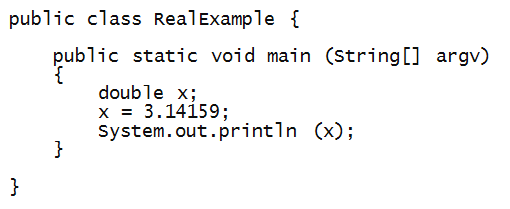
Another example:
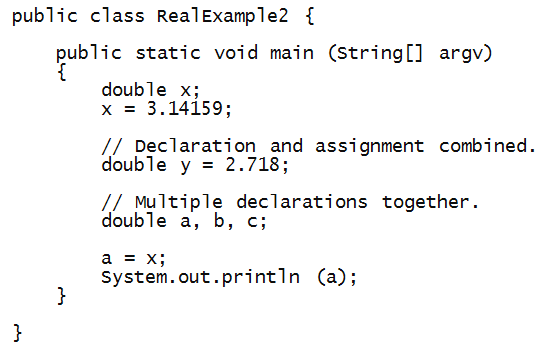
Again, as with integers, the standard operators apply:
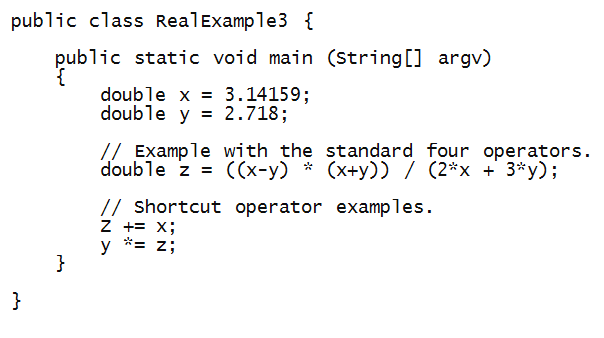
In-Class Exercise 1:
Write a program to print out the area of a circle
whose radius is 1.5 inches.
In-Class Exercise 2:
Can you find a well-known formula or law in science or engineering
that uses all four of the standard operators:
+, -, *, /? If not, find one that uses as many
as possible.
In-Class Exercise 3:
Do the increment and decrement operators work with
real numbers?
Now consider this simple example:
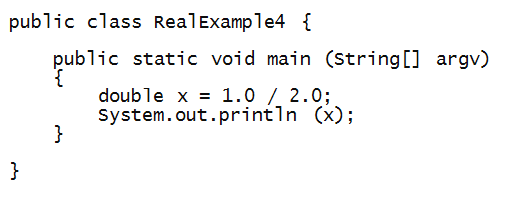
In-Class Exercise 4:
Change the assignment to:

and see what prints. Explain the result.
Casting
Consider the following program:
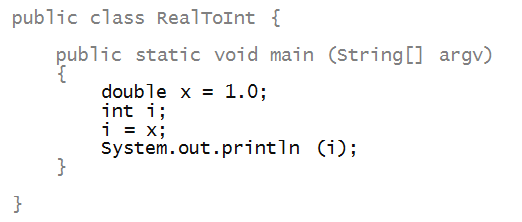
In-Class Exercise 5:
What you suppose will be printed? Try it.
Then, change the program so that you initially
assign the value of 1 to i and
then assign i to x.
An assignment from an int to a
double works fine:
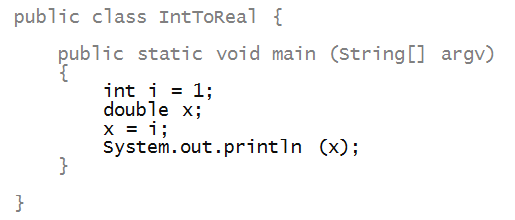
About casting:
- The assignment from int to double
works because every int is a valid double value.
- However, a double need not be a valid int.
=> Which is why the compiler complains.
- However, we can force an assignment using an
explicit cast (jargon alert!)
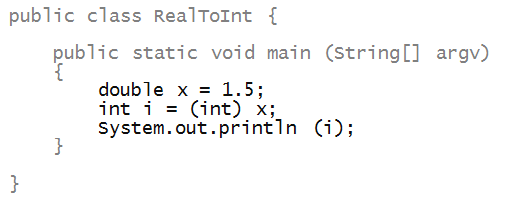
- The result: the largest integer less than the real.
=> The result is 1 above.
- An explicit cast is need even if the double's
value happens to be an integer like 1.0.
- As we'll see later, casting is a general operation
that can be applied to different variable types.
In-Class Exercise 6:
What do you get when you cast the real value
0.5 to an int?